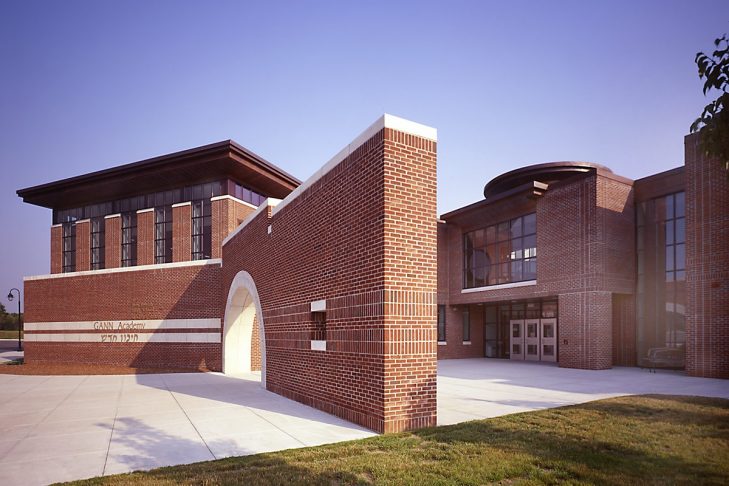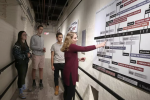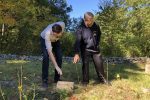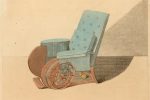Now in its second year, Waltham-based Gann Academy’s U.S. history course has broken new pedagogical ground by focusing on the history of disability in America. A highly experiential class, the final project for last year’s course was to curate a museum exhibit called “Division, Unity, Hardship, and Progress: A Disability History of the United States,” which included displays of early 20th-century crutches, leg braces and “earphones” for the deaf. Until recently, the exhibit was on display at Charles River Museum of Industry & Innovation in Waltham.
In their first year teaching the course, Yoni Kadden and Alex Green chose to focus on disability issues through the history of the Walter E. Fernald State School. Each man brought his expertise to the subject: Kadden is the chair of Gann’s history department and Green comes to Gann from Harvard Law School, where he is a fellow and researcher. Kevin Levin, an integral part of this year’s project, is a historian and author with an expertise in public history.
Part of the motivation for the history course came from the discovery that Gann Academy was built on the former site of Murphy Army Hospital for veterans. The Metropolitan State Hospital for the mentally ill sat across the road from the school. And adjacent to the academy were the remains of the Walter E. Fernald School, which was one of the oldest publicly funded institutions in the country for people with disabilities.
The three teachers not only provided students with a historical context to study disability in America, they also explored the surrounding community in and out of the classroom. Kadden told JewishBoston, “You can’t understand the history of the Fernald School without seeing what happened in the larger American society.”
At this point in the school year, Gann has continued to make use of its location to learn specifically about the American era of the Age of Reform beginning in 1848. “We’re getting the familiar larger narrative but doing it in a way that feeds into this intense focus on disability history and the Fernald School,” said Levin. “We tell our students, ‘You’re a better historian if you understand the broader narrative.’”
The Fernald School, which initially opened in 1848 in South Boston before moving to Waltham in the 1880s, has a devastating history. Many of its patients—both children and adults—were abused and neglected during the decades it was in operation. Horrifying scientific experiments were performed on residents, according to an article in The Boston Globe. The school closed in 2014.
As Gann students toured what was left of the school with Kadden and Green last year, Green found a notebook with lesson plans from 1899, along with colorful toy blocks. Both items were included in the museum exhibit, which received funding from the Newton-based Ruderman Family Foundation, which advocates for disability rights. Gann student Zachary Sherman, one of the exhibit’s curators, said working on the museum show demonstrated to him “how nuanced the history of disability was. A lot of people try to simplify it into one type of narrative. For every action that was taken, there were always multiple sides of that story.”
This year’s American history class is focusing on the Metfern Cemetery, in which 298 Fernald residents and Metropolitan State Hospital patients were anonymously buried. The cemetery is walking distance from the school. According to Green, these burials are another part of the harrowing history connected to the Fernald School. At first, Green was determined to reconstruct the lives of the dead on his own. When the task proved too overwhelming, he enlisted the help of his history students. Green said the collaboration turned into “a broader sense of purpose and a broader sense of values.” Added Levin, “The work we’re doing in this class is on par with anything being done on a college level.”
In addition to uncovering the identities of those buried at Metfern, Gann students have been working on signage for the cemetery. According to the three teachers, having signage connects a historic site to the larger community. “Recognizing a place also gives students a sense of responsibility, righteousness and even indignation,” said Kadden. “Students start to feel what these institutions looked like, and it increases their desire to tell those stories. As the message grows, so do the questions. How do you teach kids to put up the most righteously indignant sign? How do you do public history in a way that draws students and the community in?”
As the course expands, students are refining their project-based skills. This year’s public history project with the cemetery has also enabled students to embrace Jewish values directly. “What we’ve essentially done for the Metfern cemetery is to build a Yizkor book, a book of remembrance,” said Kadden. “And it has been profoundly meaningful.”






